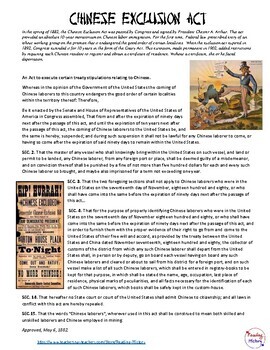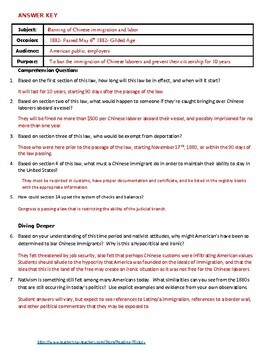Chinese Exclusion Act- Primary Source Reading
- PDF
What educators are saying
Description
During the 1880s, nativism was on the rise in urban America. During a dark time in American history, the Chinese Exclusion Act was passed, barring immigration and citizenship for the Chinese.
This primary source document includes an abridged version of the Chinese Exclusion Act (Section 1-4 & 14-15), as well as 5 comprehension questions and 2 critical thinking questions, as well as a breakdown of subject, occasion, audience, and purpose.
Feel free to view the preview for a breakdown of the source.
This primary source follows the reading strategy of SOAPstone. If you are unfamiliar with SOAPstone, please download my free resource on this reading strategy.
It is an extremely easy strategy to use when breaking down any reading material. This resolution is no exception. I hope you enjoy this resource!





